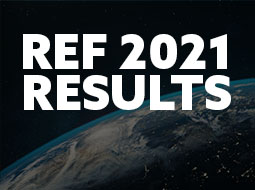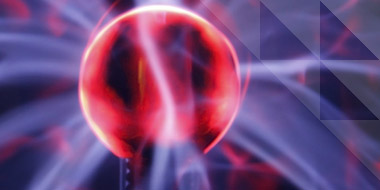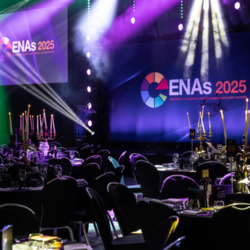The Quantum and Molecular Photonics group offers extensive expertise in many topics in photonics including quantum optics and nanomanufacturing techniques; laser/maser technology and brightness enhanced light sources; photophysical and functional properties of organic semiconductors; novel photonic devices and applications enabled by structured light physics. We collaborate with academic departments within the university as well as scientific communities across a range of UK and international universities and industry practitioners in the field. Our current research covers the following topics:
Fluorotonix: Imagine a world where the organic compounds that you drink in tonic water and coffee could be used as key components in your TV displays or phone screens. This is not so far-fetched since quinine (found in tonic water) and caffeine already have light emission properties. In this work, we aim to harness these properties through simple chemical modifications that bring the dream of tonic water TV that bit closer.
Beyond the Single Molecule: Measuring light-emitting materials in ideal scenarios can overlook a lot of interesting behaviour that only then emerges in device fabrication or when those conditions breakdown. Some organic emitters are extremely sensitive to their environment and we consider the effects of concentration, mechanical energy, thermal energy and pressure on these emitters to uncover new phenomena and fully prepare those fabricating devices for the multitude of effects.
The Fever Tree: Quinine is the original fluorescence emitter, yet we are still uncovering new knowledge about its light emission (see Fluorotonix project above). This project seeks to understand the motivations of researchers and the societal factors that affected the research direction of quinine studies from the original investigation in the 1840s to the present day.
Single-photons on demand: Planck's assumption of electromagnetic energy quantization and Einstein's hypothesis of light quanta (or photons) introduced the wave-particle duality of light and led to the quantum effects, such as quantum vacuum fluctuations and quantum entanglement; novel technologies now make it possible for us to create and detect single photons on demand. In this project, we characterize experimentally the single photon emission from quantum dots, colour centre in diamond, and 2D materials, measuring second-order autocorrelation functions using single-photon counting in a confocal fluorescent microscope. We do this by engineering the defects, cavities, and waveguides at the wavelength scale to create devices with optimized structures for maximal photon emission and collection efficiency into useful modes.
3D Nanophotonics in artificially structured materials: 3D photonic crystal materials with a full photonic bandgap hold much promise for guiding, storing and controlling light but such structures are not routinely researched because of the difficulty of fabrication of arbitrary structures at the wavelength scale. In this project, we aim to fabricate wavelength-scale 3D structures blocking light propagation and orientation in all directions and polarizations in the 0.5–1.6 µm region, and deliver the significant impact of emerging technologies (e.g., novel sensors, biomimetic structures, nano-lasers, and quantum light sources). To this end, the three objectives of the proposed work are:
- Fabricating structures for controlling light trapping and propagation in the wavelength range of 0.5–1.6 µm;
- Creating full photonic bandgap materials by backfilling the low index contrast polymer templates with high index chalcogenide materials using CVD/ALD techniques;
- Investigating the application of 3D photonic structures in novel sensors, biomimetic structures, nano-lasers and quantum light sources.
Micro-Nanostructure-Stabilized Liquid-Crystalline Blue-Phase: Currently, the remaining grand challenge LCDs face in the display market is response time (a few milliseconds), which is ~ 100 times slower than that of an OLEDs (~ 0.1 ms); to achieve sub-millisecond response time for suppressing the colour breakup issue, blue phase liquid crystal (BPLC) is emerging as a strong candidate for reaching this goal. In recent works, the group has demonstrated that a polymeric microwell template can dramatically improve the stable temperature range up to 20°C (typically 1−5 °C) of the BPLC while enhancing reflectivity, and stability of the reflection peak wavelength. In this project, we extend the temperature range and ideal single-crystals of blue phase liquid crystal, which can be used to significantly increase the refresh rate of LCD displays to 50°C by an approach based on the combination of organised microstructures and nano-patterned planar surface substrates.
Structured light physics: Light has been purposefully controlled by mankind for thousands of years, and yet we have only been able to fully tame light fields since the advent of laser technology. Structured light refers to light field tailored in its all degrees of freedom, and temporally and/or spatially structured light has found applications in various domains. We will investigate the sub-wavelength scale behaviours of structured light, for instance, spin-orbit interaction and spin Hall effect of light, and exploit these effects for novel functionalities on the nanophotonics platform.
All-optical signal processing: The next evolution of optical fibre communication systems, quite possibly to the form of space-division multiplexing (SDM) systems, is fundamentally hindered by the limited data processing capability available with current DSP technology. We investigate an alternative methodology of signal processing technology based on space-time conversion of light, for processing high volumes of multi-dimensional optical information in SDM systems with low latency and power consumption.
High-dimensional quantum sources: Optical vortex beams allow us to access an infinite dimensional Hilbert space of light, namely via the intrinsic optical orbital angular momentum (OAM). Photons possessing OAM are being studied as carriers for high-dimensional quantum information processing. We investigate the nonlinear effects in optical vortex fibres, such as four-wave mixing, for the efficient generation of high-dimensional single photons and photon pairs.
Solid-state laser technology: Lasers enable many scientific, industrial and medical applications, and systems requiring high power visible excitation for laser action (e.g., Ti:sapphire; Alexandrite; Cr:LiSAF) are challenged by the unavailability or excessive high-cost visible pump lasers. This project will explore deep into both the diode-pumped and LED-luminescent concentrator pumped lasers that use transition-metal-doped gain media such as Alexandrite. We will develop beyond state-of-the-art highly stabilised laser sources whose high performance coupled with cost-effectiveness could open new scientific opportunities that enhance access of researchers/technologists into a broad range of Quantum Technology.
Maser and NV-diamond magnetometry: Room-temperature continuous maser in diamond paves the way for a new class of ultra-sensitive microwave amplifiers with applications in medicine, security and sensing, quantum computing/information processing. Synthetic (CVD or HPHT grown) diamonds containing charged nitrogen-vacancy centre (NV-) defects have several remarkable quantum properties, and this research investigates the development of new technologies using NV diamond, especially for nanoscale applications.
Brightness enhanced luminescent light sources: The maximum brightness of LEDs has been increasing, but their luminance is far from what is essential for multiple applications that still rely on high brightness. This project deals with an ultra-bright light technology based on LED pumping of luminescent light-guiding structures that replaces environmentally inefficient, short life lamp technology, and providing spectrally diverse, high power alternative to expensive visible laser technologies at a fraction of the cost. The brightness enhanced luminescent light source would be a profoundly enabling new tool for basic science, and bright illumination and excitation applications in lasers, masers as well as medicine/healthcare (endoscopy and optical coherence tomography) and lighting industry.
Research relationships
This group is a part of the University’s multi-disciplinary research into the theme of Energy Futures.
Research from this group has been submitted to REF2021 under UoA 12: Engineering.












